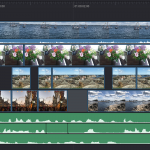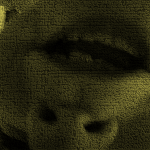This chapter examines the implications for conceptualising, composing and structuring a postqualitative research project with video and sound. To do so, the authors challenge philosophically, politically and methodologically the mainstream ideas about how video in research works. The chapter starts with a brief detour to explore how the historical entanglement between art and science might inspire ways that postqualitative research could trouble the concept of representation in research, which lies constantly beneath the surface when video and sound technology is integrated into research practices. Demonstrated through a range of examples of research practices embracing moving images and sounds differently, this chapter offers a taste of what postqualitative research with sonic and visual technology could entail. Key questions are discussed, such as what comes into focus when paying attention to the material and the nonhuman through video and sound, and what ontological shift this technology allows or promotes. The role of sound is given special attention as an example of readjusting what is heard (and valued as worth hearing) when analysing research data. The aims of the chapter, with its examples and suggested activities, is to excite and inspire researchers to reanimate and re-imagine research with video and sound.
Author(s)
Soern Finn Menning, Karin Murris and Jon Wargo


